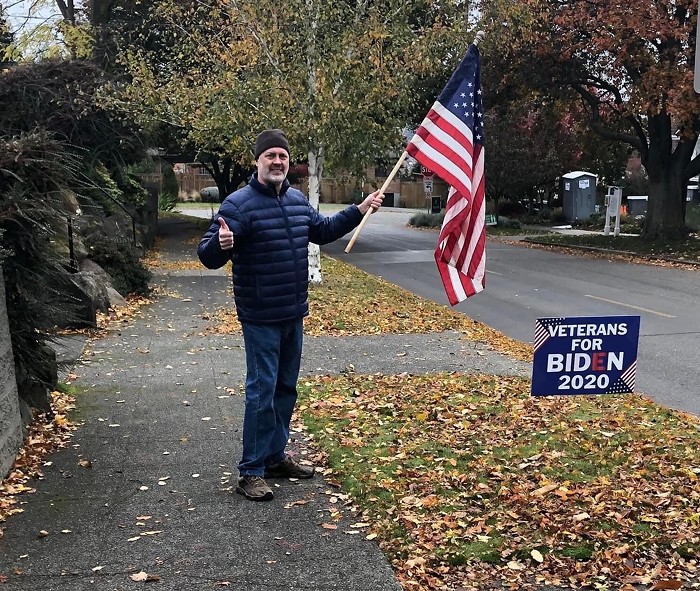This city is going through a dramatic transformation these days. Back in 2008, the recession ground most construction to a halt, but now, six years later, we’re the fastest-growing city in the nation, and you can hardly look out a window without counting the cranes. In fact, there’s so much new construction going on that the city has started up a program aimed simply at mitigating the impacts of all the different projects on sidewalks, businesses, and traffic.
But as we learned throughout Seattle’s minimum-wage debate, the growth and opportunity in this economy don’t include everyone.
Take, for example, the construction industry itself. The Great Recession hit diverse and lower-income South Seattle neighborhoods hard. But when construction chugged back to life, unemployed workers in those neighborhoods saw jobsites spring up around them that offered few or no jobs to local residents. The levy-funded paving of Rainier Avenue in 2011 was a notable one, says Michael Woo, an organizer and activist in Southeast Seattle. “There was street paving work going on all along Rainier Avenue, from I-90 all the way up into Rainier Beach. And the crews didn’t look like this community,” he says. Around the same time, the city closed the Rainier Beach Community Center for a much-needed rebuild. Woo says a committee of local construction workers agitated for some of those jobs to go to local workers, but instead saw jobs go to crews from Pierce County who commuted in to the site. “So during two years of construction on that project, a lot of workers came 30 miles each way to work [there],” laments Woo. But even though it was a city project, paid for by taxpayers, there was nothing legally requiring contractors to hire locals.
That’s about to change.
Seattle City Council member Sally Clark agrees that the Rainier Beach Community Center was a particularly “egregious example” of a big city project that didn’t spur local jobs; she calls it “the last straw for some people.” For more than a year, the city has been studying a potential “local hire” ordinance, which would put rules into place guaranteeing that some percentage of work hours on large capital projects go to local residents. (It may go so far as to mandate workers’ zip codes.) And the analysis of labor experts validates exactly what Woo and other activists have been saying for a long time.
A report by the UCLA Labor Center on 33 different city-funded public works projects that employed almost 3,000 workers over the last few years found some startling statistics. Like the fact that only 6 percent of the workers actually lived in Seattle. Six percent. Not just that: Only 25 percent of them even lived inside of King County.
For a host of reasons both economic and environmental, trucking workers from outlying counties into city jobs is problematic—think traffic, pollution, and the ripple effect on local paychecks. And while people of color experience higher unemployment here, the workforce on those jobs was slightly less diverse than the city.
What’s the policy answer? That’s where we get stuck again. From October 2013 to May of this year, a coalition of contractors, subcontractors, community members, and policy experts met—just like the city’s minimum-wage committee did—to hash out consensus-based policy recommendations for a city “local hire” ordinance. How many local workers or work hours should be required? What does “local” mean? How large does a city project have to be for these rules to kick in? How does this interact with union hiring rules? And what about nonunion shops? After many months, the committee delivered a set of big-picture recommendations that still leaves the city council with some details to hammer out.
Council Member Clark, who chairs the council committee that will first discuss the ordinance, says they have to add in their own consideration: the cost to the city. “It’s not cheap to do this,” she says. “And it shouldn’t be.” Because if you require that contractors use local workers, there have to be local workers for them to hire, and there is projected to be a tightening of the construction labor market in a few years. “If you’re going to do it right,” Clark adds, “you’re going to provide recruitment and training to potential workers and technical assistance to contractors,” along with strengthening the whole pipeline of pre-apprenticeship and apprenticeship.
And while Clark says the council is not running behind on drafting this ordinance—even though the advisory committee finished meeting in May—and she’s committed to putting legislation forward this year, Woo and others are getting nervous. The council, they point out, is running out of time before their all-consuming budget discussions start in September, after which point little real legislating can get done.
“We need to have legislation introduced ASAP,” says Woo.
Clark’s city council committee is set to discuss the advisory committee’s recommendations, finally, on Thursday, August 7. ![]()



















